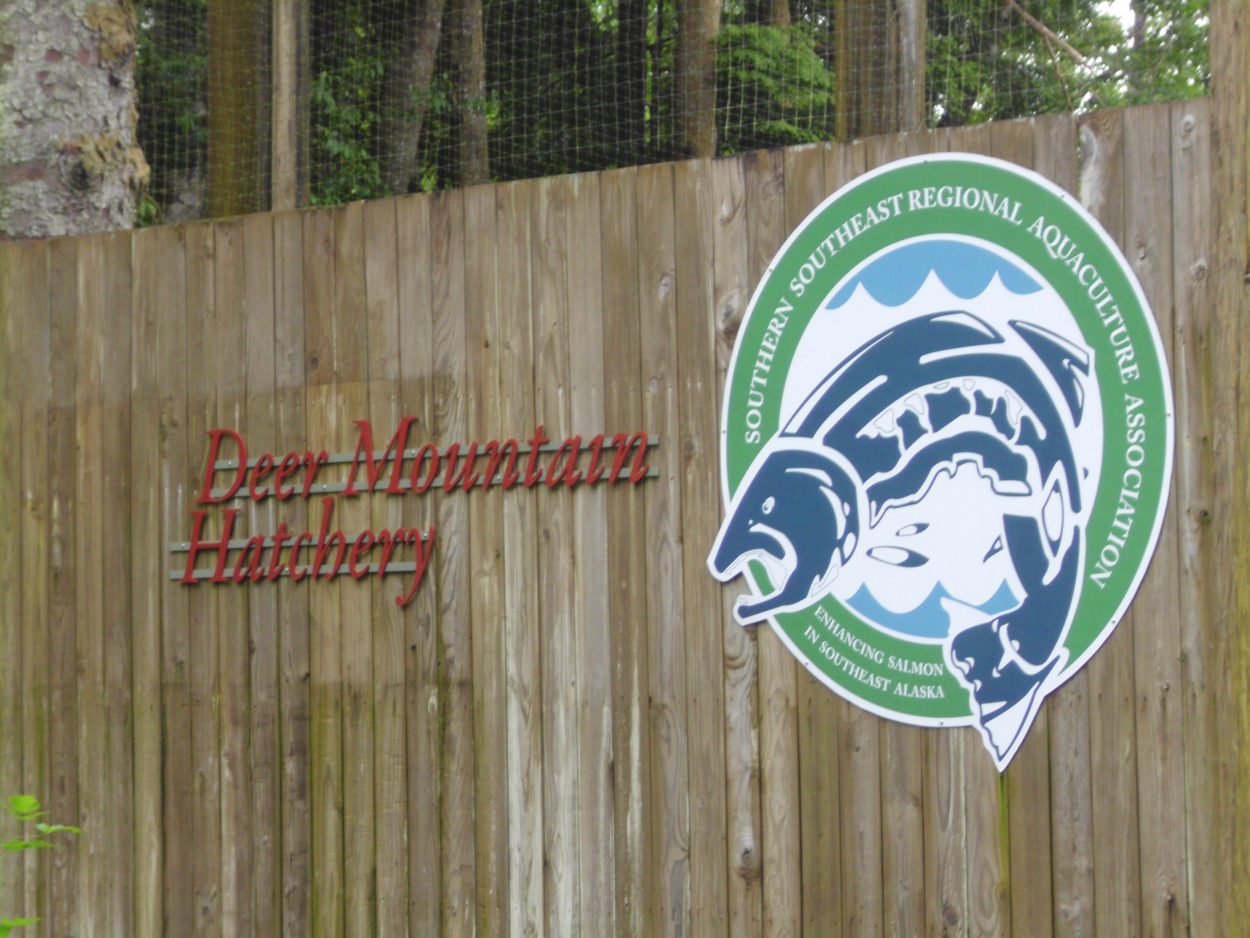
A Ketchikan nonprofit operating regional fish hatcheries says it needs to make some changes, which could include offering fewer salmon for commercial fishermen next year.
During a recent Ketchikan Chamber of Commerce luncheon, SRRAA’s general manager David Landis emphasized Alaska’s salmon hatcheries don’t farm fish like in Canada.
“We don’t raise these fish to when they’re able to be harvested. We just raise them (until) they can exist on their own.”
Rather, the Southern Southeast Regional Aquaculture Association and others raise juvenile chum, king and coho salmon and let them go.
“So they are released as soon as they’re able to go out to sea. And this mimics nature.”
SSRRA has seven hatcheries and eight release sites from near Petersburg to the boundary with British Columbia. The goal is to have a quarter of the fish caught and sold for what it terms “cost recovery” to pay for SSRAA operations. The remaining three quarter are caught by commercial fishermen and sold to processors.
SSRAA also keeps brood stock for next year’s runs. Most of the salmon it sells, Landis says, are chum from Neets Bay north of town. But he says this year most of the fish were retained for brood stock – the money fish weren’t returning.
“(Of) our summer chum goal of $7 million, we got $100,000. So we were the last to eat at the table with cost recovery, because you have to have brood stock, otherwise you can’t continue the program.”
Poor runs like these hit the nonprofit’s bottom line. With a need for additional revenue, SSRAA’s board will be looking at options to get back on track. These may include reserving a larger percentage of the run for cost recovery, borrowing through a state loan program or finding ways to reduce expenses.
There are a lot of theories for the poor runs. But he says one thing is certain: climate change is altering the oceans.
“We have marine conditions that are difficult and primarily it’s because of predation. It’s not that our fish don’t have enough to eat, it’s that something is eating them. And it’s probably an unfamiliar predator that is an invasive species, basically, caused by this warm marine environment.”
Landis was asked about operations at the Deer Mountain Hatchery in Ketchikan.
He says the facility is open during the summer for self-guided tours, and school groups schedule tours other times of the year. He says the primary purpose of the hatchery is to produce 500,000 king salmon annually.
“A hundred thousand are released into Ketchikan Creek. And so they swim down through Thomas Basin and out to the ocean and come back as adults. And then 400,000 we transport to Carroll Inlet right there at the Swan Lake hydro plant. We have net pens set up there to rear fish.”
He says the fish are reared at the Swan Lake site for several months in the spring and then released into the wild. At the end of their life cycle, they return to Ketchikan Creek.








